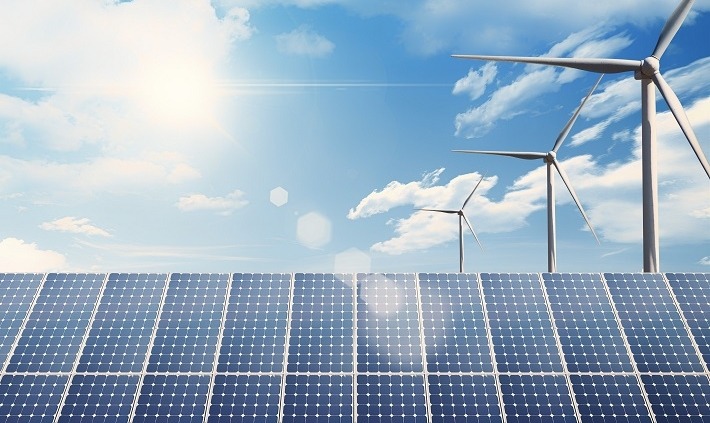Con Edison Development planea implementar un proyecto de almacenamiento de energía en baterías de 2GW en California
El gobierno del condado Imperial de California aprobó recientemente un plan de implementación para un proyecto de almacenamiento de energía en baterías con una capacidad instalada total de hasta 2 GW. El proyecto implementará una combinación de sistemas de almacenamiento de energía con baterías de iones de litio y sistemas de almacenamiento de energía con baterías de flujo.
La Junta de Supervisores del Condado de Imperial votó en una reunión el 7 de diciembre para aprobar condicionalmente el despliegue de un proyecto de almacenamiento de energía en baterías del Westside Canal a gran escala propuesto por el desarrollador de energía verticalmente integrado Con Edison Development.
Como subsidiaria de desarrollo de Edison United Electric Corporation, Con Edison Development adquirirá un terreno agrícola de 163 acres en el condado de Imperial para la construcción de este proyecto, que ha estado inactivo durante aproximadamente 20 años. El sistema de almacenamiento de energía de batería del proyecto ocupará aproximadamente 148 acres de sitio, y Edison United Electric también construirá un puente sobre el canal cercano para su paso.
Con Edison Development presentó un documento sobre el desarrollo de este proyecto en abril de 2020. El documento indicaba que el proyecto se construirá por etapas dentro de 10 años.
Curtis Taylor, director de desarrollo de negocios de Edison United Electric, dijo que la capacidad instalada de cada etapa del proyecto está entre 25MW y 300MW. La escala específica depende de las necesidades del mercado y de las posibilidades de obtener contratos a largo plazo en ese momento.
El sistema de almacenamiento de energía en baterías en este proyecto puede utilizar una combinación de baterías de iones de litio y baterías de flujo, que se conectarán a la red de la subestación del Valle Imperial después de su apertura. Taylor señaló que la central eléctrica del Valle Imperial es un centro energético de importancia estratégica que puede transportar electricidad desde California a los estados vecinos.
La reunión a la que asistió la Junta de Supervisores del Condado de Imperial se llevó a cabo después de que se completara el Informe de Impacto Ambiental (EIR). El informe señala que el proyecto de almacenamiento de energía no tendrá un impacto significativo en el medio ambiente local y también ha llevado a cabo una evaluación del impacto en los recursos hídricos.
Curtis Taylor dijo que el proyecto de almacenamiento de energía en baterías de Westside empleará a unos 200 trabajadores durante el período pico de construcción y creará de 5 a 10 puestos de trabajo locales una vez que se ponga en funcionamiento.
El proyecto también traerá millones de dólares en ingresos fiscales al condado, promoverá el desarrollo económico del área y construirá nuevas carreteras alrededor del sitio, además de la construcción de nuevos puentes sobre el canal y otra infraestructura.
Una vez inaugurado el proyecto, aumentará la tasa de utilización de las instalaciones de generación de energía solar nuevas y existentes en el área. Cristina Márquez, representante local de la Hermandad Internacional de Trabajadores Electrónicos (IBEW), señaló en la reunión de consulta pública que el despliegue de sistemas de almacenamiento de energía en baterías no sólo es crucial para que el Estado se deshaga de los combustibles fósiles, sino que también puede crear empleos bien remunerados.
Márquez dijo que con la construcción por fases del proyecto, esto proporciona potencial de desarrollo para el mercado laboral en la región, e instó a las agencias pertinentes del Condado de Imperial a brindar apoyo al proyecto después de su aprobación.
Raymond Castillo, presidente del quinto distrito del condado de Imperial, dijo que el despliegue de este proyecto de almacenamiento de energía en baterías puede generar muchos impuestos para el área.
Hasta ahora, Con Edison Development ha instalado y puesto en funcionamiento un sistema de almacenamiento de energía en batería de 100 MW en los Estados Unidos y está implementando un sistema de almacenamiento de energía en batería con una capacidad total de almacenamiento de energía de 1 GWh. Además, la compañía actualmente ha instalado instalaciones de generación de energía solar de 3GW e instalaciones de generación de energía eólica de 500MW, incluidas aproximadamente instalaciones de generación de energía solar de 800MW implementadas en California, incluida la instalación de generación de energía solar Wistaria de 100MW inaugurada en el condado de Imperial en 2018.
El proyecto de almacenamiento de energía en baterías de Westside promoverá el rápido crecimiento de la capacidad de almacenamiento de energía en baterías de California, aunque teniendo en cuenta los objetivos climáticos del estado y la escasez de energía durante el período pico del verano, es posible que su tasa de crecimiento no sea lo suficientemente rápida. Según informes de los medios de la industria, el sistema de almacenamiento de energía en baterías implementado en California también incluye una cartera de tres proyectos de almacenamiento de energía con una capacidad total de almacenamiento de energía de 2,1 GWh desplegados por Southern California Edison, así como un despliegue de apoyo en parques solares por parte de la Central Coast Community Energy Company Sistema de almacenamiento de energía con batería de flujo de vanadio de 226 MWh.



